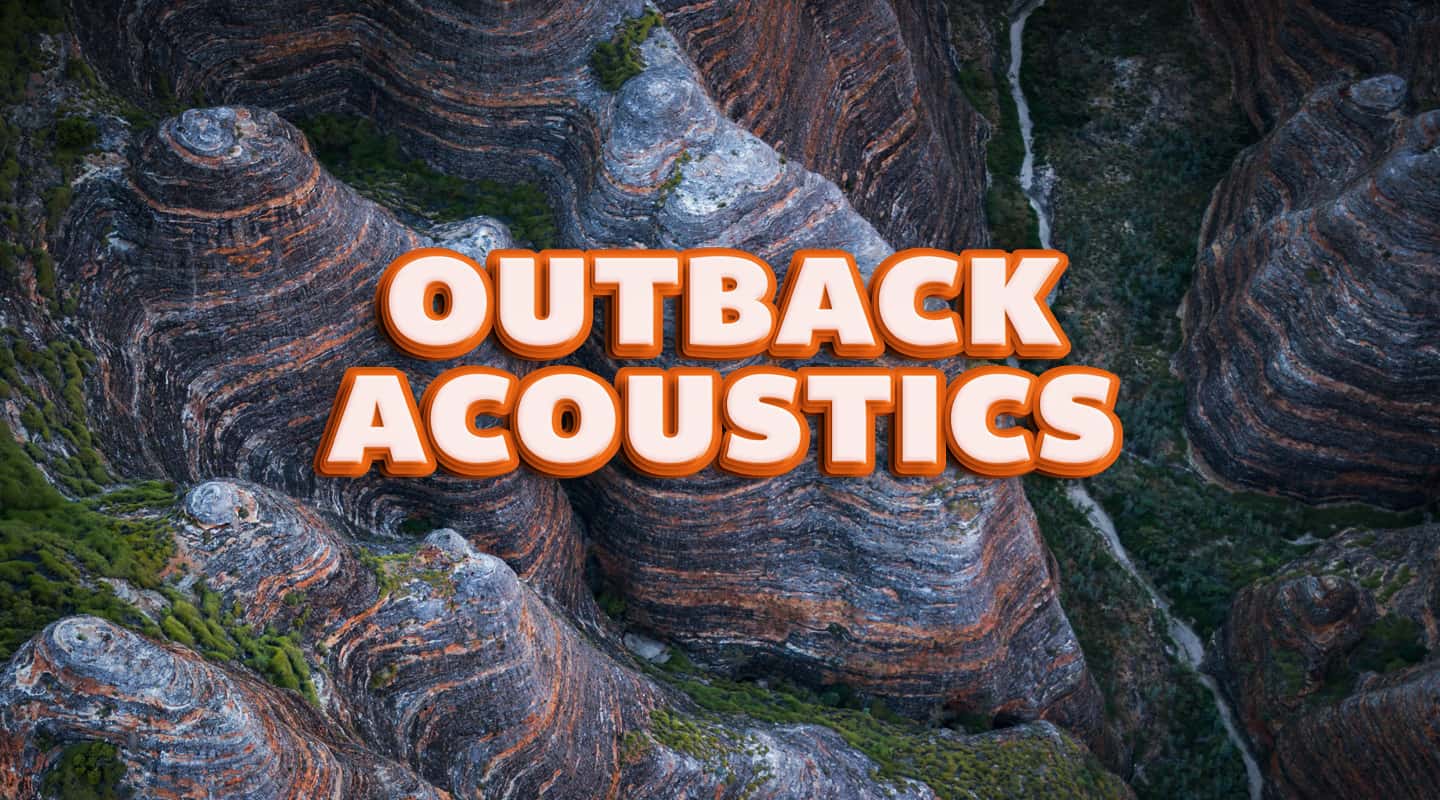
Outback Acoustics
Bart Willoughby headed to the Bungle Bungles to record in the spiritual surroundings of its naturally-formed cathedral-like acoustics.
Story: Nick Harrison
Photos: Cole Bennetts
Is there a better place to record one of our most iconic Indigenous songwriters and drummers than in a 200m-high, naturally formed cathedral of a gorge that turns toms into thunder? With bags full of Nagra, DPA and Rycote gear, we headed off on a 10-day expedition to find out. The idea was to record instruments amongst the beehive-shaped towers of the Bungle Bungle Range and collect natural soundscapes for Bart Willoughby’s upcoming album, Iron Ore. Several months ago we had recorded Bart playing the grand organ and drumming at the Melbourne Town Hall, and these new recordings were made using those as backing tracks.
The pain and suffering Aboriginal people have experienced since the invasion and settlement 230 years ago is still felt today. Bart’s early life was similar to many other Indigenous people; he was taken from his mother at the age of three, put in an Aboriginal mission and didn’t find her again until he was 17. He taught himself piano and drums and wrote the Aboriginal anthem, We Have Survived, when he was only 18 years old. From there he went on to become the first Aboriginal artist to sign a record deal and tour internationally (with his band No Fixed Address) and the first to score music for a feature film. He’s also played in pioneering groups Yothu Yindi, Mixed Relations and Coloured Stone. In addition to the recordings, Bart had booked gigs in Kununurra, Warmun and Frog Hollow with Broome musician Steve Pigram, giving the two time to connect with surrounding communities and the land.
LOCATION BUNGLE
The Bungle Bungle Range sits in the far eastern part of the Kimberly region of Western Australia, about 1000km south west of Darwin. It’s a spectacular 450 square kilometre area of rocks that includes massive beehive shaped domes standing 250m over the grasslands. The rock formations were sculpted by 20 million years of erosion and amongst them are huge caverns, chasms and gorges. Getting into the Bungles required driving a 4WD 90 minutes beyond the main turnoff over a number of river crossings. The probability of just happening on the perfect acoustics in a hayfield of caverns was pretty low, so we’d scouted out a number of locations a year earlier and were well prepared.
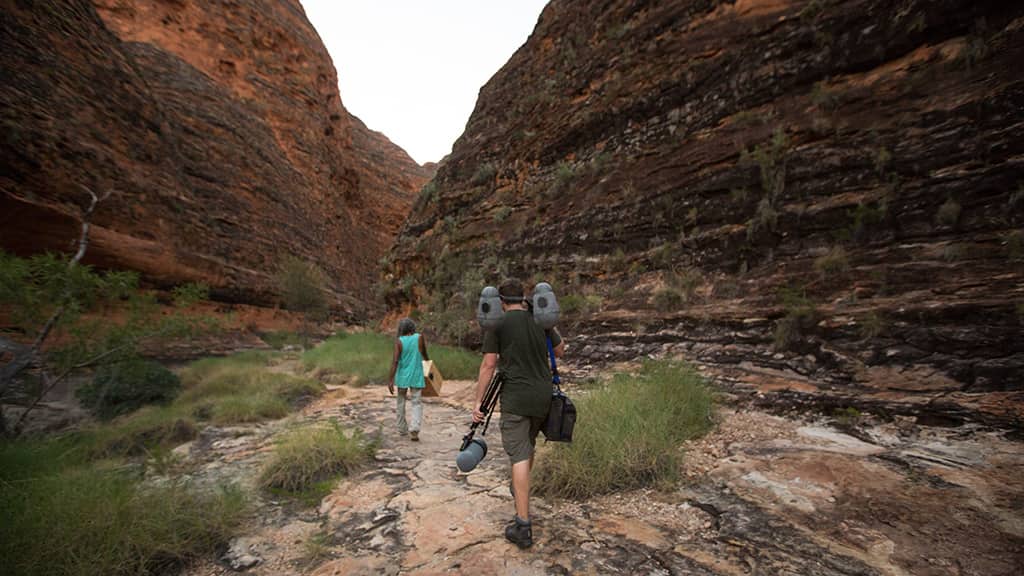

Cathedral Gorge highlighted how amazing reverb can be in naturally formed environments; lush, diffuse, no problematic echoes and no chance of standing waves
PACKING HEAVY
This type of trip calls for real location sound equipment; battery powered recorders, windshields, appropriate stands and carefully chosen mics. We brought it all over on the plane from Melbourne, and because Bart and I are APRA members we made full use of the musician’s extra baggage allowance, which only cost $90 for 128kg over eight bags. Awesome! We actually ended up flying too much gear over to fit in the 4WD and had to leave the empty cases in Kununurra.
I picked up the pair of small Rycote Cyclone windshields specifically for this trip. They look quite different to typical blimps and deadcats; their reinforced frame is covered by Rycote’s 3D-Tex material, which does a great job of keeping the wind out. You access the mics by removing the sides of the shield held by extra-strong magnets and clip locks. Inside, the Lyre clips cradle the mic and an XLR connector neatly feeds the mic signal to the handle helping to avoid that problematic small air gap that can open up on other windshields. Most importantly they sound quite transparent and the improved wind protection resulted in zero wind issues. It was very nice to have that sense of security during the more critical location recordings.
GORGE-OUS CATHEDRAL
Our key destination at the Bungle Bungles was Cathedral Gorge, a huge cavern with a half-open ceiling at least 100m above and acoustics similar to what you would expect of a large cathedral. The acoustics here really highlight how amazing reverb can be in naturally formed environments; lush, diffuse, no problematic echoes and no chance of standing waves. I measured an RT60 of seven seconds and the ambient sound was quite usable for recording (averaging about 35dBSPL, A-weighted). As fortune would have it, there were also no flies or other insects during any of the recordings.
Over three treks into the Gorge we recorded didge, clapsticks, woodskin drums, ukulele and singing over backing tracks sent to Bart through headphones.

TAKING IN THE SOUNDSCAPE
Throughout the trip I made around a dozen soundscape recordings, mostly in and around the Bungle Bungles. Using two field recorders I can either record two different locations simultaneously or one location with multiple perspectives.
My preferred approach is to set up the recorders in different locations and leave them for several hours before returning. Making shorter recordings and hanging around just hasn’t worked efficiently for me in the past; I might end up with five or 10 minutes of decent sound but there’s always a period after the car has stopped (and then setting up the mics) where the insects and any animals change their behaviour/sounds. Waiting around during a recording takes patience which increases the likelihood of only making a short recording. If I spend 20 minutes on the setup and pack down I want a reasonable duration of recording.
I split the two rigs into the Nagra VI with two DPA4023 cardioid mics in the Rycote ORTF windshield, and the Nagra Seven with the two DPA4006 omni mics in the Rycote Cyclone windshields on a K&M stereo bar (for an A-B 35 arrangement). I used the Manfrotto Nano stands because they’re compact and light.
The soundscapes were quite unique around the park. The insect life was active although, apart from birds, I captured almost no wildlife in 15 hours of recordings. There were some distant dingo howls around Elephant Rock, otherwise there’s not much around at this time of year. It was quite surprising, yet very good in terms of soundscape recording.
It’s also a perfect area for capturing natural sound, no cars or manmade sounds polluting the environment. The result is a series of lush, detailed stereo soundscapes that will be woven through Bart’s songs.
WUNAN, GIVING BACK
I was introduced to the term ‘Wunan’ by our friend Gian in Kununurra. He described it as a type of gift cycle used by the people of the Kimberly and beyond. Lending a hand, sharing a skill or some knowledge, giving a present, all of that is so important in developing relationships and we found it often lead to surprising outcomes and opportunities.
Travelling through the Kununurra, Warmun and Frog Hollow communities for gigs gave us a chance to try and contribute to the communities. Bart did this through a concert in each town or community, Cole our photographer spent time showing kids how to use cameras, then passing the photos and any copyright back to the communities. I went out and made promo recordings for the local radio station (asking kids to yell ‘Warmun Radio is deadly!’ and similar), sound recordings of elders at Warmun conducting a language preservation class, two junbas (corroborees) and a spoken word piece on youth suicide by Uncle Gabe in Warmun; each of these recordings were given back to the communities and go towards repaying them for the gifts given to us such as junbas and hospitality. We got told a number of times that folk come into communities and take, take, take — particularly photos without consent. It’s important to seek permission to make audio recordings, or take video and photographs of anyone, including remote communities. Transferring the copyright for recordings and photos to the community is a good approach to consider, any usage of the recordings by us then needs to be sought through the community, which helps to keep things in check.
Overall this was a great experience working within one of the world’s oldest cultures. The project gave me plenty of food for thought about protocols, ethics and responsibilities as a sound recordist, and really highlighted the spiritual connection with land that Aboriginal communities have in a way I wasn’t aware of.




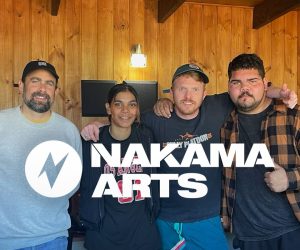


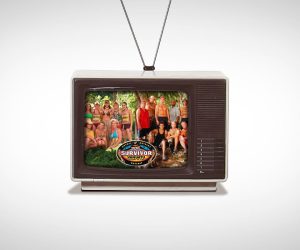

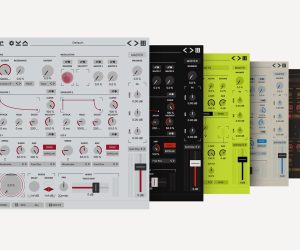
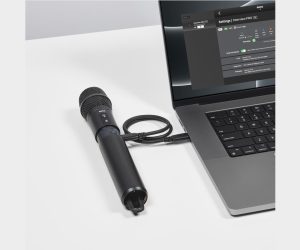
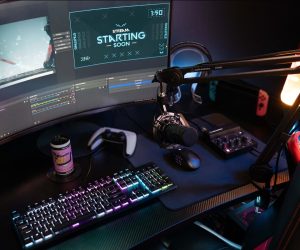

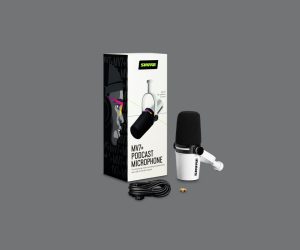
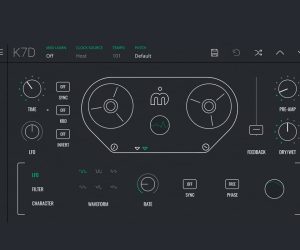


RESPONSES